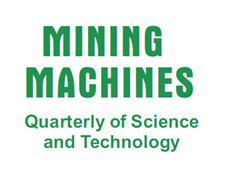Kalukiewicz A., Szyguła M.
Monografia nr 3
Gliwice 2004 s. 1‑138,
ISBN 83-919228-6-3
BRAK W SPRZEDAŻY
Opracowanie składa się z sześciu części. W pierwszej przedstawiono znane konstrukcje zmechanizowanych obudów skrzyżowania, w tym kilka z bardzo dużym udziałem autorów...,
An influence of the face-end powered roof support design on its operational properties
The report consists of six parts. Known designs of the face-end powered roof supports were given in the first part, including few of them with a great contribution of authors both in a concept design and in an implementation. In the second part a methodology and studies on the suggested face-end support loads realized in two different upper entries in real conditions, were given. The result analysis was conducted as regards the use of the KSK-18/37-Pz face-end powered roof support in those entries. The third part was devoted to the analysis of spatial-and-support designs of the face-end powered roof support solutions in the Polish and foreign mining industry, which were not implemented for operation. The next parts were devoted to the thorough analysis of the real model of the KSK-18/37-Pz face-end powered roof support, implemented for operation. In the fourth part the stand tests methodology of the face-end support, used for the arch profile entry, and the KSK-18/37-Pz face-end roof support as well as the tests and their results were presented. The conclusions were drawn. In the fifth part, the algorithm of the support computer analysis of the KSK-18/37-Pz face-end roof support as well as the tests and results of the virtual model of the support, made by the FEM method, were given. The conclusions were drawn.
The sixth part is devoted to the visual testing of the KSK-18/37-Pz face-end roof support during operation in real conditions. The analysis of the failure reasons as well as conclusions as regards the support design, drawn from observations, were given. Main design directions for the universal face-end powered roof support were the final conclusions.




